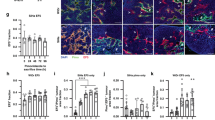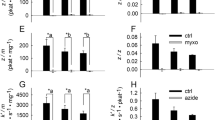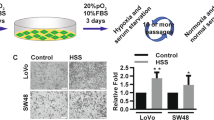Abstract
Mammalian cells (V79-379A) in suspension culture rendered chronically hypoxic showed greater resistance to Adriamycin than exponentially growing aerobic cells. Resistance to Adriamycin increased as a function of the time cells were held under hypoxic conditions, with maximal resistance after 6 h. Chronically hypoxic cells retained their resistance when reoxygenated, and did not return to their original sensitivity until they had been in air for 24 h. Uptake of Adriamycin was similar for chronically hypoxic and exponentially growing aerobic cells, but much more than for plateau-phase cells. These findings suggest that chronically hypoxic cells in tumours may be resistant to this drug.
This is a preview of subscription content, access via your institution
Access options
Subscribe to this journal
Receive 24 print issues and online access
$259.00 per year
only $10.79 per issue
Buy this article
- Purchase on Springer Link
- Instant access to full article PDF
Prices may be subject to local taxes which are calculated during checkout
Similar content being viewed by others
Rights and permissions
About this article
Cite this article
Smith, E., Stratford, I. & Adams, G. Cytotoxicity of adriamycin on aerobic and hypoxic chinese hamster V79 cells in vitro. Br J Cancer 42, 568–573 (1980). https://doi.org/10.1038/bjc.1980.281
Issue Date:
DOI: https://doi.org/10.1038/bjc.1980.281
This article is cited by
-
The effects of hyperoxic and hypercarbic gases on tumour blood flow
British Journal of Cancer (1999)
-
Kinetic resistance to anticancer agents
Cytotechnology (1993)
-
Tumour cell resistance to anthracyclines ? A review
Cancer Chemotherapy and Pharmacology (1985)
-
Sectional analysis of tumor colony growth in the soft-agar assay: Effects of oxygen
Journal of Cancer Research and Clinical Oncology (1984)



